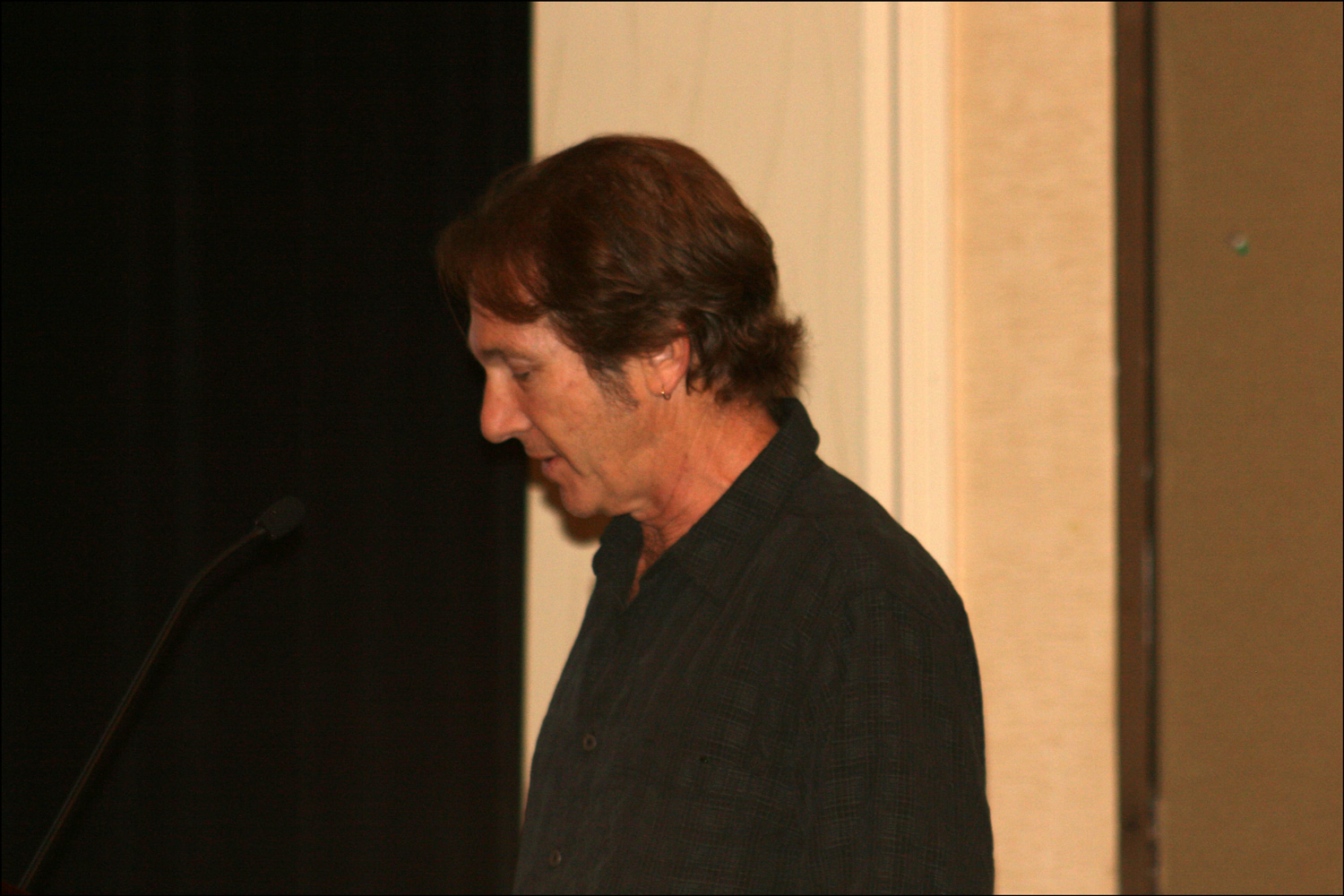At the Seventh International Family Tree DNA Conference for Group Administrators, Michael Hammer, PhD presented a talk on “Neandertals in Our Midst: Just How Modern is Our Genome?”
Michael Hammer
SOURCE: Michael Hammer (Houston, Harris County, Texas); photographed by Stephen J. Danko on 06 November 2011.
What did Darwin have to say about human evolution? He avoided the subject . It was actually Thomas Henry Huxley who discussed evidence as to man’s place in nature.
If all species of the genus Homo (Homo erectus, Homo neanderthalensis, Homo sapiens, among others) are considered humans, did modern man replace older forms or was there gene flow among species that coexisted at one time? Did archaic forms of humans leave behind DNA evidence?
An indirect method of inferring the past uses contemporary DNA, molecular dating, and single locus phylogeography . From this type of evidence we know that, since there is greater genetic diversity in Africa, the root of the human evolutionary tree is among Africans . In Newsweek magazine, on 11 January 1988, the press coined the term “Mitochondrial Eve.”
A direct method of inferring the past uses ancient DNA . Using this approach, there is no evidence for a Neandertal contribution to mitochondrial DNA (mtDNA).
Analysis of the Y chromosome (Y-DNA) by indirect approaches shows greater African diversity, an African root, with a time to the most recent common ancestor (TMRCA) of about 130 KYA.
Analysis of the X chromosome (X-DNA) by indirect approaches shows a greater Asian diversity, an Asian root, with a TMRCA of about 2 MYA.
The DNA of three Neandertals has been analyzed . The data from this analysis shows that there was a little interbreeding of Neandertals with Eurasians, but not with Africans.
Evidence shows that after humans left Africa, they bred with Neandertals and then that population interbred with the Denisovians in Melanesia . There is Denisovian (from the Denisova cave in Siberia) DNA on chromosome 12, a greater Melanesian diversity, and a Melanesian root.
An innate immunity gene STAT2 introgressed (moved from one species to another) from the Neandertal and is positively selected in Melanesia . Interbreeding of modern man with Neandertals led to an advantage.
Inferring the past using an indirect method involving contemporary DNA, molecular dating, and a computational approach shows that chromosomes 4, 18, and 13 entered African DNA relatively recently, providing evidence for interbreeding of modern man with a now extinct hominid form in Africa.
DNA evidence allows us to reject the theory of recent African replacement.
Bloggers who have discussed Neandertal DNA include John Hawkes.
Copyright © 2011 by Stephen J. Danko




